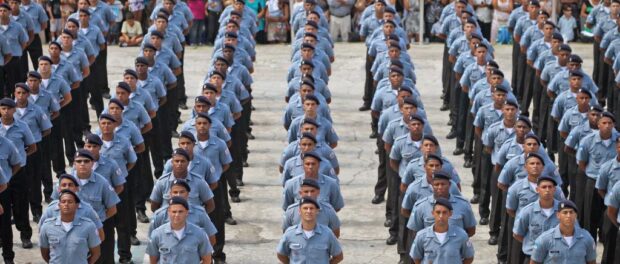
This is Part 1 in a five-part series documenting Pacifying Police Unit (UPP) Installations.
Rio de Janeiro’s Pacifying Police Unit (UPP) program was initiated in late 2008; today units have been installed in 38 favelas. The program has been praised for lowering homicide rates and paving the way for infrastructure and social programs to enter favelas, but criticized for ongoing police violence, human rights violations, lack of accompanying social projects and ultimately failing on the promise to deliver peace to communities. Each favela is unique and each community has experienced a different pacification process. The program has gone through various stages as it was implemented in the different regions of Rio.
In this series RioOnWatch charts the chronology of the UPP program, from the first “model” unit in Santa Marta in 2008 to the latest occupations in large, complex North and West Zone favelas. The first three UPP units were installed between December 2008 and February 2009 as test programs and drive models to combat armed conflicts with drug traffickers to make these zones safer for residents and the delivery of missing public services. Soon, however, occupying and reducing violent conflict in the favelas was understood as an urgent security objective for Rio in preparation for 2014 World Cup and the 2016 Olympics.
From December 2008 until January 2010, the geographic focus remained in the wealthy and tourist areas of the South Zone, with the first UPP units viewed as a success for their more humanitarian operations and non-corrupt police forces, resulting in a real estate boom to the region surrounding pacified favelas. UPP units moved in and appeared to immediately achieve their principal goal of retaking the territory from drug gangs: top level traffickers fled, and with them the use of guns and sale of drugs, if not completely eradicated, became much less ostentatious, and armed violence fell dramatically. Especially in the South Zone, implementations led to an emergence of new businesses within the communities, an increase in tourism, and a subsequent blurring of the traditional favela/asphalt (informal/formal) divide of the city. These first six implementations were also accompanied by a strong marketing drive, with highly publicized unveilings, prominent roles for women, and little or no negative media coverage:
1. Santa Marta – South Zone
Date of installation: December 19, 2008 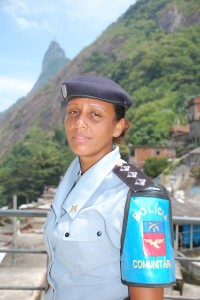
Rio State Security Secretary, José Mariano Beltrame, installed the first UPP in Santa Marta declaring it a test model to be applied in other favelas. Located in the South Zone neighborhood of Botafogo, the police invasion gained a lot of media attention and, according to researchers Nicolas Bautés and Rafael Soares Gonçalves in their essay on the program, the favela became the “laboratory and showcase of the public security policy of Rio de Janeiro’s Military Police.” Santa Marta is seen as one of the main success stories of the UPP program, perhaps because, as the first implementation, it received particularly close attention from the State with the most carefully prepared police, perhaps because its size and topography lends itself to community policing, or perhaps because the implementation was led by the much respected officer Priscilla de Oliveira Azevedo. Azevedo, who rapidly became one of the faces of pacification, earned wide recognition for her role in the community and was presented with an International Woman of Courage award by Hillary Clinton in 2012. The pacification of Santa Marta- the homicide rate has dropped to zero in the favela since implementation-has helped it become a tourist hotspot, generating business while also raising house prices.
Local Leader Perspectives
“The UPP has its high and low points, there are moments when everything is good and moments when it isn’t, like when the police changed and the new ones came with viciousness from other favelas.” – José Mario Hilário dos Santos, President of Santa Marta Neighborhood Association
“Great! Things improved, my son can run in the streets without shootings. But this is his right as a citizen! This should not be a favor [from the government].” Repper Fiell, resident, rapper and activist
2. City of God – West Zone
Date of installation: February 16, 2009 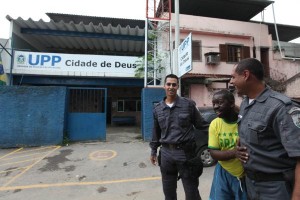
Second to receive a UPP installation, City of God was a strategic favela to occupy for its location near the Barra da Tijuca neighborhood where the Olympic complex is being built and because of international notoriety for violence brought by the 2002 fiction film of the same name. Pacification has been a much more complicated process in City of God, and there has been significant resistance to the implementation of the program. In recent months there have been two separate attacks on UPP headquarters, one of which resulted in an officer being shot in the arm. The difficulties faced in City of God are principally due to its size (135,000 inhabitants) and the strength of drug factions there. It is important to note the favela’s history: City of God began as public housing for evictees from 23 principally South Zone favelas under the military government of Carlos Lacerda in the 1960s.
Local Leader Perspective
“I think the UPP is a policy that is not for the public security of the people, it is more like a big show and it didn’t result in anything but the weakening of social movements. Today, community institutions don’t discuss policy. Today you are seeing the UPP doing sports, health care… But the police are not here to be fun or cute, the police are here to guarantee rights. I look at the police as an authority, and this authority comes with rights. It can’t stick its foot in people’s doors. Everyone is behind the UPP but what is happening today in Rio is a big mess. What are the roles of authority?” Iara Oliveira, resident and coordinator of NGO Alfazendo
3. Batan – West Zone
Date of installation: February 18, 2009 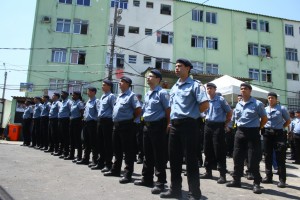
Batan was chosen as the third area to receive a UPP as a response to the very public torture and assassination of journalists from the O Dia newspaper by militia members in the community in 2008. The episode later became the basis for a storyline in the Elite Squad 2 movie. The only UPP installed in an area previously dominated by militias, the occupation has repeatedly been used to show that UPP police were targeting their own corrupt factions as well as drug gangs.The arrival of the UPP has cleared the way for the arrival of various institutes of social inclusion. Batan now boasts a new day care, school, and a family clinic, which was opened to the public in 2012. This year SESI opened a center offering various academic and vocational courses for local residents at no cost, and this type of parallel program is essential for the UPP to be effective. In general, reports from Batan are positive, yet earlier this year the sergeant of UPP Batan was removed from his post after admitting to killing a fellow officer. This episode shows the difficulty that the police institution faces in removing its officers’ conditioned tendency towards lethal violence. The overwhelming military mindset-reinforced and deepened during the dictatorship-still pervades, and is largely responsible for most of the human rights abuses committed by the Military Police.
Resident Perspectives
“Cariocas are accustomed to thinking the police are corrupt. Here we don’t have this, the police don’t ask for anything, or any discount. They pay for the products. It’s a new mentality, another form of action, and with this they gained the confidence and respect of the population of Batan.” – Edson Velasco, resident and store owner
“Youth in favelas have always been repressed… we are seen as vandals, like we just want to fool around. The police don’t see us as people; they don’t see us as citizens. For them, we are all bandits. That’s the politics behind the police work in favelas.” – Carlos Gabriel, resident, 18 years old
4. Babilônia/Chapéu-Mangueira – South Zone
Date of installation: June 10, 2009 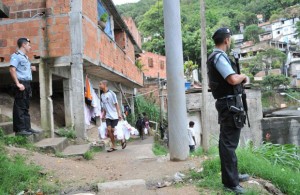
The first three UPP programs received extensive press coverage and were widely viewed as successful. The next favelas to receive UPPs, between June 2009 and April 2010 were all in the wealthy South Zone of Rio. The next-door communities of Babilônia and Chapéu Mangueira received the fourth UPP. The UPP installation here encapsulates the South Zone UPP experience. House prices have risen dramatically due to its enviable location, tourism has grown, and with it increasing visibility by outsiders and pacification has led to the emergence of new businesses. In Babilônia there has been an emergence of eco-tourism. There have been sporadic episodes of violence involving both drug traffickers and UPP officers–the most recent of which led to residents blocking a road in Copacabana–however violence on a whole has decreased. As Edmilson highlights below, possibly the most significant impact of the UPP has been to remove, or at least limit, the ostentatious use of weapons in favelas, especially among teenagers. This change, even if primarily aesthetic, will have an important effect on the current generation of youngsters, who will grow up in an environment in which social control and influence is no longer so heavily based on a show of armed force.
Resident Perspectives
“Oh, just removing the weapons from the favela has been a great thing. Before I can remember teenagers, 13 or 14 years old, with rifles as a part of the landscape of the favela.” – Edmílson Carlos da Silva, Babilônia Resident
“The first thing is to demystify that the UPP is a new police. This is a lie. Nothing changed, it’s [the same] police without proximity [to the community].” – André Constantine, Babilônia resident and founder of Favela Não Se Cala
5. Pavão-Pavãozinho/Cantagalo – South Zone
Date of installation: December 23, 2009 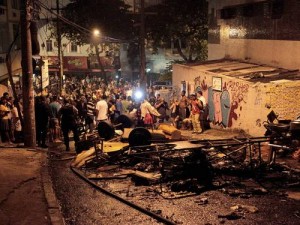
Cantagalo and Pavão-Pavãozinho’s location in Ipanema and Copacabana, in the tourist heart of Rio’s South Zone made them a priority area to claim as ‘pacified’ and the surrounding area to feel safer for tourists. The area surrounding Cantagalo/Pavão-Pavãozinho saw huge real estate value leaps with the perception of increased security. The first two years of pacification were relatively smooth; the last three though have been plagued by stories of police violence. First the death of André de Lima Cardoso Ferreira in June 2011, killed by apparently drunk off-duty officers as he went to buy a hot dog for his pregnant girlfriend. This year saw tensions rise further as a number of violent clashes in the two communities left many questioning the mandate of the UPPs. In January, Petrick Costa dos Santos was shot dead during a confrontation with the police, and in April, Douglas Rafael Da Silva Pereira (commonly known as DG), a dancer on the TV program Esquenta, was shot and killed by UPP officers during a raid intended to capture drug traffickers. It has been reported that Adauto do Nascimento Gonçalves, a top-level drug trafficker known as Pitbull, has returned to this community in spite of the UPP, and it was in a raid targeting him that DG was shot. DG`s death caused protests (in which another Cantagalo resident suffered a fatal gunshot to the head) in the streets of Copacabana with many calling for the removal of the UPP. The experience of Cantagalo and Pavão-Pavãozinho highlights the difficulty the UPPs face in ridding even self-contained mid-sized favelas of a criminal network. In addition to Pitbull’s return, there have been reports of increasing militia presence this year.
Resident Perspectives
“Violence always existed in the community. But now that the police have pacified it, this violence grew because the government is using the propaganda [machine]. When you see a [police] representative on television that says that a good bandit is a dead bandit, they show what the police are actually doing in the community.” – Deize Carvalho, Cantagalo resident, member of the Network Against Violence
“It was hard, because as President of the Association, I had to respect the authority of the drug traffickers, but I also had to make sure I was respecting and obeying the police. Now that the UPP is in the community, it is very peaceful and safe, and many welcome their presence.” – Luiz Bezerra do Nascimento, President of the Centro Social de Nossa Senhora Fátima in Cantagalo
6. Tabajaras/Cabritos – South Zone
Date of installation: January 14, 2010
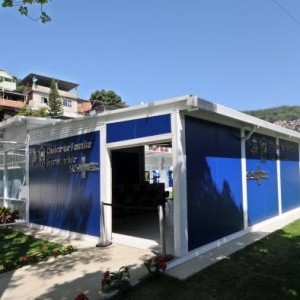 Tabajaras and Morro dos Cabritos have experienced the double edged sword of the UPP. The pacification has brought new residents to the favela and increased movement between the small previously calm favelas and the formal city, bringing more business to communities: generally seen as positive aspects. However, the community is struggling to adapt to this change. In the João Barros Barreto Family Clinic, patient limits have been reached, and problems with water and sewage have been exacerbated. Furthermore, there is a worry that expansion is unstructured and potentially dangerous. Tabajaras is one of the few communities which has been allowed a baile funk, demonstrating the diversity among UPPs, each dependent on the prerogative of the local commander. Tabajaras has had few episodes of violence since pacification. However, there was worrying news in September, with reports emerging of a battle for control of the community between the Red Command and Friends of Friends drug trafficking factions.
Tabajaras and Morro dos Cabritos have experienced the double edged sword of the UPP. The pacification has brought new residents to the favela and increased movement between the small previously calm favelas and the formal city, bringing more business to communities: generally seen as positive aspects. However, the community is struggling to adapt to this change. In the João Barros Barreto Family Clinic, patient limits have been reached, and problems with water and sewage have been exacerbated. Furthermore, there is a worry that expansion is unstructured and potentially dangerous. Tabajaras is one of the few communities which has been allowed a baile funk, demonstrating the diversity among UPPs, each dependent on the prerogative of the local commander. Tabajaras has had few episodes of violence since pacification. However, there was worrying news in September, with reports emerging of a battle for control of the community between the Red Command and Friends of Friends drug trafficking factions.
Resident Perspectives
“I think it’s a good initiative and the arrival of the UPP was very good for the community. Now we can raise our kids and grandkids with dignity.” – Waldir, Tabajaras resident
“We saw in other communities that the commercial establishments sometimes closed. In our community, pacification incentivized us to open our store. Today we can work with security. Often, I stay here late, until 10pm sometimes.” – Arimar Antonio Linhares, Tabajaras resident and business owner
This is Part 1 in a five-part series documenting Pacifying Police Unit (UPP) Installations. For other articles in the series click here.
